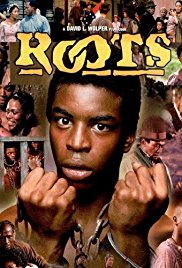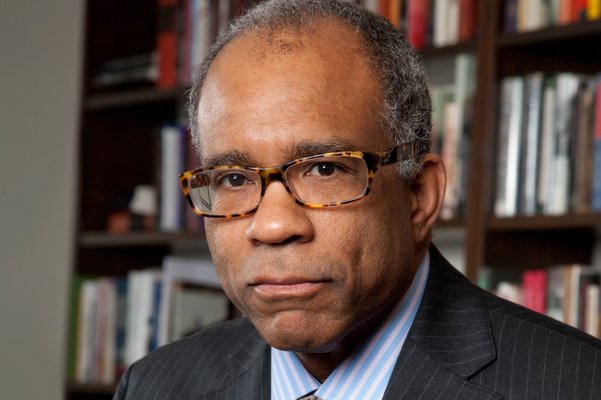See the TWM student handout Slavery: A World-Wide View, Then and Now.
African slaves were imported into North America beginning in the 17th century. Slaves were most economically beneficial in the agrarian South where tobacco and cotton were grown. The demand for slaves increased dramatically with Eli Whitney’s invention of the cotton gin in 1793. Whitney was a Northerner. Cotton seeds are naturally dispersed among the fibers in the cotton ball. Before the cotton gin, they had to be separated from the strands of cotton by hand. This process took so much time and labor that it made cotton production too expensive, even for a slave-based economy like the South.
The cotton gin consisted of a revolving cylinder to which teeth were attached. The teeth passed through a comb, which was too fine to permit the seeds to come through. As cotton was fed into the gin, the teeth caught the fibers and pulled them through the comb separating the cotton fibers from the seeds.
Many of the Founding Fathers, including those who held slaves, realized that slavery was a terrible evil. Thomas Jefferson put language condemning slavery into the draft Declaration of Independence that he submitted to the Continental Congress. That language was excised at the request of Southern representatives. (However, at the end of his life, in his will, Jefferson permitted most of his slaves to be sold to pay his debts. The only exception was the Hemings family.) George Washington’s will freed all of his slaves and established a trust fund to help them adjust to life as free persons. Benjamin Franklin, who at one time had owned a slave, realized the evil of slavery. Nevertheless, during both the Continental Congress and the Constitutional Convention he ultimately supported the grand compromise protecting slavery in the South. This was necessary to secure Southern support for the Revolution and the new government. However, in his later years, Franklin gave his support to efforts to abolish slavery.
The principles of the Revolution and slavery were totally inconsistent. However, the Southern slave-holding states would not have participated in the Revolution, nor would they have agreed to the U.S. Constitution, if slavery had been outlawed. And so, in order to have freedom for whites and the first representative democracy that arose from the people, the Founding Fathers made a bargain with the devil. The Declaration of Independence ignored the obvious contradiction between its statement that all men are created equal and the treatment of black slaves. The Constitution recognized black slavery as an institution and the most authoritative interpretation of the Constitution was that, until the 13th Amendment passed in 1865, the U.S. government did not have the power to outlaw slavery. Slavery was a question within the determination of the individual states. Lincoln’s Emancipation Declaration obtained its legal authority from the rite of the government to suppress rebellion and applied only to those areas then in actual rebellion against the U.S. The border states that had remained loyal to the Union were permitted to keep their slaves until the passage of the 13th Amendment.
By 1800 most of the states north of Maryland had abolished slavery. Slavery had also been prohibited in the Northwest Territories in 1787. Territories did not have the same rights as states and were administered at the discretion of the federal government. In 1808 Congress forbade the further importation of slaves into the United States as it was specifically permitted to do in the Constitution. The Missouri Compromise in 1821 admitted Missouri as a slave state but prohibited slavery in the territories of most of the West. After the Missouri Compromise, the Senate was evenly balanced between slave states and free states. All states admitted between 1821 and 1860 were part of a package by which one slave state was admitted at the same time as a free state. In this way, the balance of power between slave states and free states was maintained in the Senate.
In the early 19th century, political feelings hardened in the South and in the North. It became politically incorrect and even dangerous for a person in the South to advocate abolition. The misgivings of Jefferson and others concerning slavery were abandoned and it was defended as a God-given right and an institution “peculiar” to the South.
The Gambia is a country in West Africa located along the mouth of the Gambia river. In the 18th century, it was populated by the Mandingo, Wolof and Fulani peoples.
Kunta Kinte engages in a “rite of passage” marking his progress from childhood to adulthood. Formal rites of passage have been used in many cultures and permit adults to monitor and aid the transition. Formal rites of passage are characterized by removing the initiate from his or her former status; a period of isolation in which normal social contact is prohibited; some type of testing or achievement and then readmission to society in the newly acquired status. Formal rites of passage are beneficial to society because they permit the elders to help in the transition, and an opportunity for the entire group to adjust to the initiate’s new status.
Rites of passage typically involve religious, symbolic, and musical or other artistic expressions. They reaffirm the values of the society and provide a clear delineation between the rights and obligations of the individual before the passage and after.
Rites of passage occur at birth, puberty, marriage, menopause, and death. Initiation rituals are often parts of the rites of passage. In some African tribes, as well as in the Muslim tradition, circumcision was used as a part of the rite of passage from puberty to manhood. See Europa! Europa! for a discussion of circumcision.
Modern Western society has abandoned most rites of passage for puberty. (Exceptions are the Bar Mitzvahs and Bat Mitzvahs for Jewish children and the “quinceañera” parties held for Hispanic girls at age 15.) We retain important rites of passage for marriage and death, although these too are changing.






